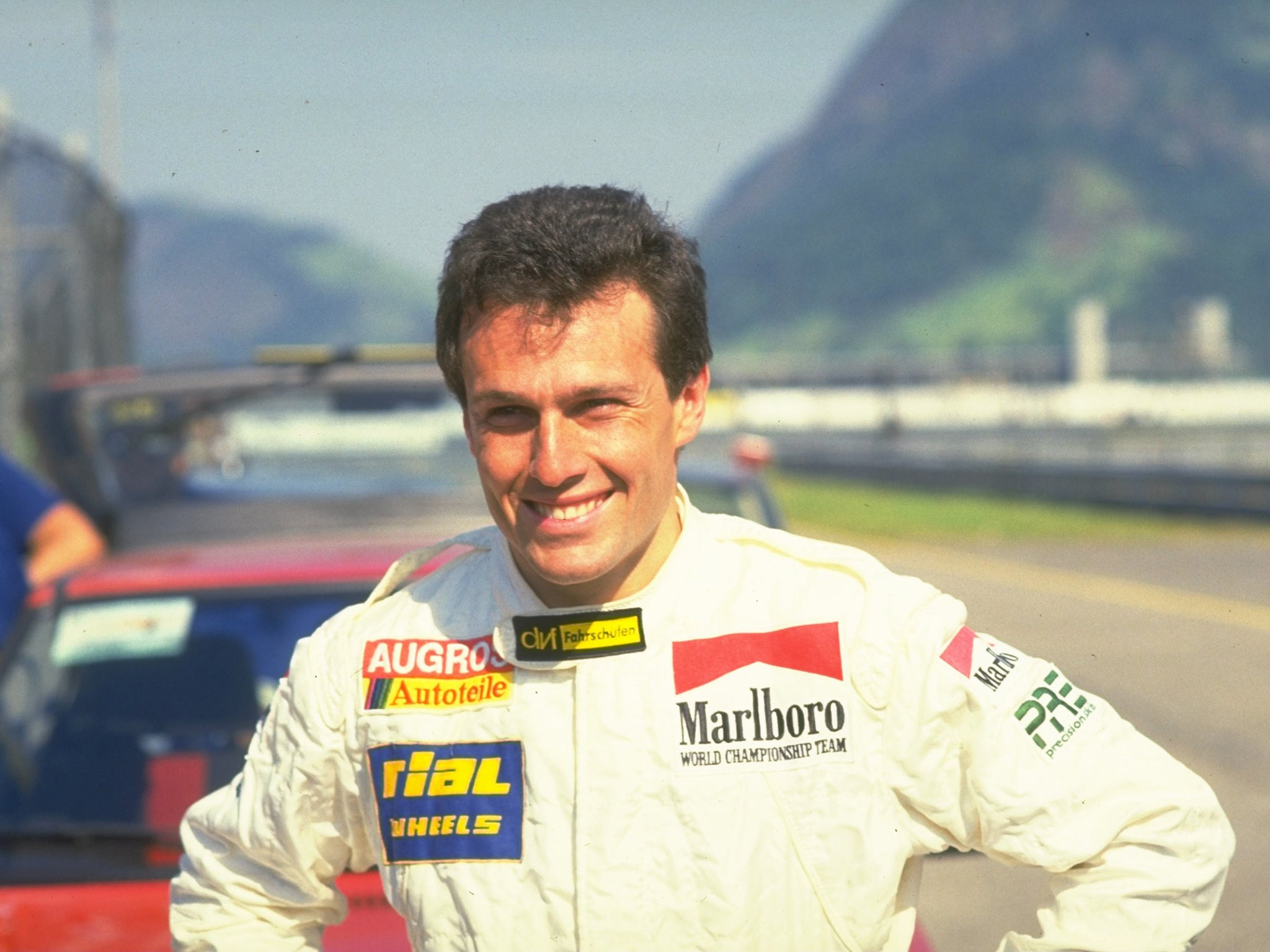Andrea de Cesaris: Formula 1 driver known for his crashes who set a record for the greatest number of grands prix raced without a victory

When he was a rookie at McLaren in 1981 it was estimated that Andrea de Cesaris, who died in a motorcycle accident in Rome, damaged between 10 and 19 cars.
If James Hunt had been Hunt the Shunt, he was Andrea de Crasheris. The man they loved to hate.
The son of a father well-placed within the Philip Morris empire, de Cesaris enjoyed a lengthy career thanks to Marlboro funding. From F3 in 1979 he graduated to Formula 2 in 1980 and drove two grands prix for Alfa Romeo in place of the late Patrick Depailler. Thence he went to Formula 1 in 1981 with McLaren under the newly minted McLaren International alliance between Ron Dennis and Teddy Mayer.
“There was an enormous amount of pressure on me because of my age and the team’s problems,” he explained. “The attention was all on John Watson and his new car, while I had the old one and there weren’t really the facilities to run two types of car; I didn’t get my new one until mid-season. Some of the accidents weren’t my fault. At Zandvoort I remember I had a problem with the front brakes; at Jarama a problem with the steering.
“In the middle of 1981 I already knew that Niki Lauda had signed a contract with McLaren and that I was out of the team. I was too young to take all this pressure – I was 20 – and I didn’t have too much experience. But everyone has one or two accidents a year.”
He did better than that average, however, with five in 1982, when he moved to Alfa Romeo, one of which took out both team cars on the startline in Austria; three in ’84; four in ’85; four again in ’87; three in ’88.
But he could be quick, and delighted in beating Lauda and McLaren to pole position for the US GP West at Long Beach in 1982. “I remember that Ron Dennis and Lauda were talking to journalists about pole position and I got it with two or three minutes to go. It pleased me not just because of that, but because I proved to myself that I could be quick with people who trusted me.”
He led until getting baulked by a back marker, and later crashed on his own oil when a pipe broke. Later he could have won in Belgium, but his transmission broke, and Monaco, where he ran out of fuel in sight of victory. In 1983 he led Alain Prost’s Renault at the majestic Spa-Francorchamps track, but dropped to second after a disastrously slow pits stop and then retired when his Alfa’s engine broke.
After he had spells with Ligier, Minardi, Brabham, Rial and Scuderia Italia, Eddie Jordan threw him a lifeline (and grabbed some much-needed Marlboro money) by making him his No 1 driver as his little team graduated to F1 for 1991. In Belgium he attacked Ayrton Senna for the lead, only to suffer engine failure.
His career might have taken off all over again, but while he was complaining that his Jordan felt nervous in fifth gear in fast corners his young rookie team-mate Michael Schumacher said quietly in a debrief that he had found it was fine if you kept it flat in sixth there and let the aerodynamics work…
He retired in 1994 after spells as a stand-in for a banned Eddie Irvine at Jordan, and later for the injured Karl Wendlinger at Sauber. He had started 208 grands prix without winning, a record. Thereafter, he got his kicks indulging his passion for windsurfing, where he demonstrated hitherto unexpected levels of speed and self-control. He did that in the summer, and traded currencies for a living in the winter.
Despite a reputation as F1’s enfant terrible he was a likable fellow. People still mention a nervous facial twitch and how every so often his eyes would roll up until just the whites showed. He would sit with his back against the Armco before a start, a barrage of photographers lined up in front of him just waiting to capture the moment. I asked him about the problem once and he responded with quiet dignity. “Everybody has a little problem, maybe, but I don’t have a problem with it when I drive.”
Later, it seemed that the problem went away of its own accord when he stopped racing, and perhaps when he stopped trying to live up to the expectations of his parents or the filial responsibility he felt towards them for their enthusiastic support.
Andrea de Cesaris, racing driver and currency trader: born Rome 31 May 1959; married Angela (marriage dissolved; one daughter): died Rome 5 October 2014.
Subscribe to Independent Premium to bookmark this article
Want to bookmark your favourite articles and stories to read or reference later? Start your Independent Premium subscription today.

Join our commenting forum
Join thought-provoking conversations, follow other Independent readers and see their replies